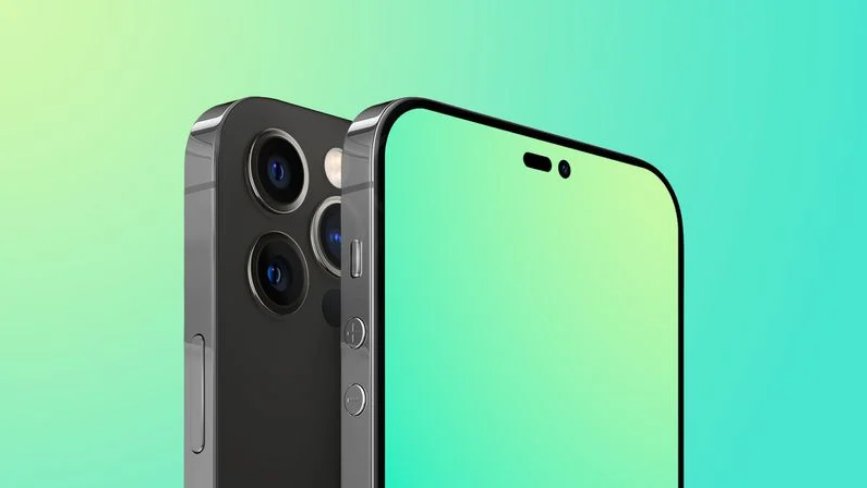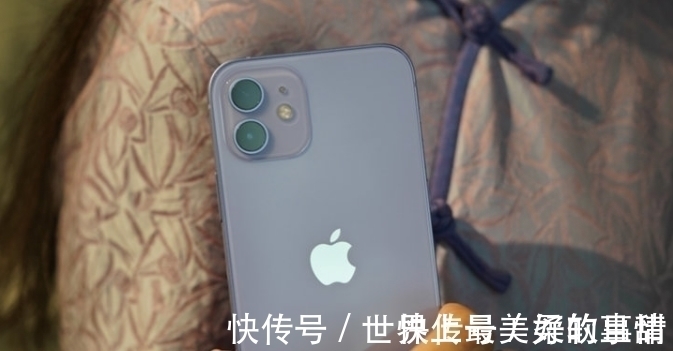文章目录
- Activity启动-IPC后续
- 1.ActivityStarter
- 二.RootActivityContainer
- 三.ActivityStack

文章图片
- Instrumentation
负责调用Activity和Application生命周期。 - ActivityTaskManagerService
负责Activity管理和调度等工作。android10中新增的 - ActivityManagerService
负责管理四大组件和进程,包括生命周期和状态切换。 - ActivityTaskManagerInternal
ActivityTaskManagerService对外提供的一个抽象类,真正的实现在ActivityTaskManagerService#LocalService - ActivityThread
管理应用程序进程中主线程的执行 - ActivityStackSupervisor
负责所有Activity栈的管理 - TransactionExecutor
主要作用是执行ClientTransaction - ClientLifecycleManager
生命周期的管理调用
ActivityTaskManagerService#startActivityAsUser:
frameworks\base\services\core\java\com\android\server\wm\ActivityTaskManagerService.javaint startActivityAsUser(IApplicationThread caller, String callingPackage,
Intent intent, String resolvedType, IBinder resultTo, String resultWho, int requestCode,
int startFlags, ProfilerInfo profilerInfo, Bundle bOptions, int userId,
boolean validateIncomingUser) {
enforceNotIsolatedCaller("startActivityAsUser");
userId = getActivityStartController().checkTargetUser(userId, validateIncomingUser,
Binder.getCallingPid(), Binder.getCallingUid(), "startActivityAsUser");
// TODO: Switch to user app stacks here.
return getActivityStartController().obtainStarter(intent, "startActivityAsUser")
.setCaller(caller)
.setCallingPackage(callingPackage)
.setResolvedType(resolvedType)
.setResultTo(resultTo)
.setResultWho(resultWho)
.setRequestCode(requestCode)
.setStartFlags(startFlags)
.setProfilerInfo(profilerInfo)
.setActivityOptions(bOptions)
.setMayWait(userId)
.execute();
} // ...省略部分代码
ActivityStartController getActivityStartController() {
return mActivityStartController;
}
frameworks\base\services\core\java\com\android\server\wm\ActivityStartController.java /**
* @return A starter to configure and execute starting an activity. It is valid until after
*{@link ActivityStarter#execute} is invoked. At that point, the starter should be
*considered invalid and no longer modified or used.
*/
ActivityStarter obtainStarter(Intent intent, String reason) {
return mFactory.obtain().setIntent(intent).setReason(reason);
}
Activity通过IActivityTaskManager.aidl调用了startActivityAsUser方法。最后调用了ActivityStarter的execute方法。
frameworks\base\services\core\java\com\android\server\wm\ActivityStarter.java
/**
* Starts an activity based on the request parameters provided earlier.
* @return The starter result.
*/
int execute() {
try {
// TODO(b/64750076): Look into passing request directly to these methods to allow
// for transactional diffs and preprocessing.
if (mRequest.mayWait) {
return startActivityMayWait(mRequest.caller, mRequest.callingUid,
mRequest.callingPackage, mRequest.realCallingPid, mRequest.realCallingUid,
mRequest.intent, mRequest.resolvedType,
mRequest.voiceSession, mRequest.voiceInteractor, mRequest.resultTo,
mRequest.resultWho, mRequest.requestCode, mRequest.startFlags,
mRequest.profilerInfo, mRequest.waitResult, mRequest.globalConfig,
mRequest.activityOptions, mRequest.ignoreTargetSecurity, mRequest.userId,
mRequest.inTask, mRequest.reason,
mRequest.allowPendingRemoteAnimationRegistryLookup,
mRequest.originatingPendingIntent, mRequest.allowBackgroundActivityStart);
} else {
return startActivity(mRequest.caller, mRequest.intent, mRequest.ephemeralIntent,
mRequest.resolvedType, mRequest.activityInfo, mRequest.resolveInfo,
mRequest.voiceSession, mRequest.voiceInteractor, mRequest.resultTo,
mRequest.resultWho, mRequest.requestCode, mRequest.callingPid,
mRequest.callingUid, mRequest.callingPackage, mRequest.realCallingPid,
mRequest.realCallingUid, mRequest.startFlags, mRequest.activityOptions,
mRequest.ignoreTargetSecurity, mRequest.componentSpecified,
mRequest.outActivity, mRequest.inTask, mRequest.reason,
mRequest.allowPendingRemoteAnimationRegistryLookup,
mRequest.originatingPendingIntent, mRequest.allowBackgroundActivityStart);
}
} finally {
onExecutionComplete();
}
}
mayWait的赋值是在startActivityAsUser中的setMayWait中,这里传入的true。会走startActivityMayWait逻辑。实际上如果mayWait为false走startActivity逻辑,它们最后都会调用startActivityUnchecked方法。
frameworks\base\services\core\java\com\android\server\wm\ActivityStarter.javaprivate int startActivity(final ActivityRecord r, ActivityRecord sourceRecord,
IVoiceInteractionSession voiceSession, IVoiceInteractor voiceInteractor,
int startFlags, boolean doResume, ActivityOptions options, TaskRecord inTask,
ActivityRecord[] outActivity) {
//...省略部分代码
result = startActivityUnchecked(r, sourceRecord, voiceSession, voiceInteractor,
startFlags, doResume, options, inTask, outActivity);
// ...省略部分代码postStartActivityProcessing(r, result, mTargetStack);
return result;
}// Note: This method should only be called from {@link startActivity}.
private int startActivityUnchecked(final ActivityRecord r, ActivityRecord sourceRecord,
IVoiceInteractionSession voiceSession, IVoiceInteractor voiceInteractor,
int startFlags, boolean doResume, ActivityOptions options, TaskRecord inTask,
ActivityRecord[] outActivity, boolean restrictedBgActivity) {//1. 初始化环境和lunchModeFlags
setInitialState(r, options, inTask, doResume, startFlags, sourceRecord, voiceSession,
voiceInteractor, restrictedBgActivity);
final int preferredWindowingMode = mLaunchParams.mWindowingMode;
computeLaunchingTaskFlags();
computeSourceStack();
mIntent.setFlags(mLaunchFlags);
//2. 复用activity逻辑
ActivityRecord reusedActivity = getReusableIntentActivity();
//...省略部分代码// 各种flags的判断
if (reusedActivity != null) {// ...省略部分代码final ActivityStack topStack = mRootActivityContainer.getTopDisplayFocusedStack();
final ActivityRecord topFocused = topStack.getTopActivity();
final ActivityRecord top = topStack.topRunningNonDelayedActivityLocked(mNotTop);
final boolean dontStart = top != null && mStartActivity.resultTo == null
&& top.mActivityComponent.equals(mStartActivity.mActivityComponent)
&& top.mUserId == mStartActivity.mUserId
&& top.attachedToProcess()
&& ((mLaunchFlags & FLAG_ACTIVITY_SINGLE_TOP) != 0
|| isLaunchModeOneOf(LAUNCH_SINGLE_TOP, LAUNCH_SINGLE_TASK))
// This allows home activity to automatically launch on secondary display when
// display added, if home was the top activity on default display, instead of
// sending new intent to the home activity on default display.
&& (!top.isActivityTypeHome() || top.getDisplayId() == mPreferredDisplayId);
//singleTop 或者singleInstance的处理
if (dontStart) {
// For paranoia, make sure we have correctly resumed the top activity.
topStack.mLastPausedActivity = null;
if (mDoResume) {
mRootActivityContainer.resumeFocusedStacksTopActivities();
}
ActivityOptions.abort(mOptions);
if ((mStartFlags & START_FLAG_ONLY_IF_NEEDED) != 0) {
// We don't need to start a new activity, and the client said not to do
// anything if that is the case, so this is it!
return START_RETURN_INTENT_TO_CALLER;
}deliverNewIntent(top);
// Don't use mStartActivity.task to show the toast. We're not starting a new activity
// but reusing 'top'. Fields in mStartActivity may not be fully initialized.
mSupervisor.handleNonResizableTaskIfNeeded(top.getTaskRecord(), preferredWindowingMode,
mPreferredDisplayId, topStack);
return START_DELIVERED_TO_TOP;
}boolean newTask = false;
final TaskRecord taskToAffiliate = (mLaunchTaskBehind && mSourceRecord != null)
? mSourceRecord.getTaskRecord() : null;
// 设置对应task并带到前台
int result = START_SUCCESS;
if (mStartActivity.resultTo == null && mInTask == null && !mAddingToTask
&& (mLaunchFlags & FLAG_ACTIVITY_NEW_TASK) != 0) {
newTask = true;
result = setTaskFromReuseOrCreateNewTask(taskToAffiliate);
} else if (mSourceRecord != null) {
result = setTaskFromSourceRecord();
} else if (mInTask != null) {
result = setTaskFromInTask();
} else {
// This not being started from an existing activity, and not part of a new task...
// just put it in the top task, though these days this case should never happen.
result = setTaskToCurrentTopOrCreateNewTask();
}// ...省略部分代码// 启动Activity
mTargetStack.startActivityLocked(mStartActivity, topFocused, newTask, mKeepCurTransition,
mOptions);
// 使Activity可见
if (mDoResume) {
// 获取栈顶Activity
final ActivityRecord topTaskActivity =
mStartActivity.getTaskRecord().topRunningActivityLocked();
if (!mTargetStack.isFocusable()
|| (topTaskActivity != null && topTaskActivity.mTaskOverlay
&& mStartActivity != topTaskActivity)) {
// If the activity is not focusable, we can't resume it, but still would like to
// make sure it becomes visible as it starts (this will also trigger entry
// animation). An example of this are PIP activities.
// Also, we don't want to resume activities in a task that currently has an overlay
// as the starting activity just needs to be in the visible paused state until the
// over is removed.
mTargetStack.ensureActivitiesVisibleLocked(mStartActivity, 0, !PRESERVE_WINDOWS);
// Go ahead and tell window manager to execute app transition for this activity
// since the app transition will not be triggered through the resume channel.
mTargetStack.getDisplay().mDisplayContent.executeAppTransition();
} else {
// If the target stack was not previously focusable (previous top running activity
// on that stack was not visible) then any prior calls to move the stack to the
// will not update the focused stack.If starting the new activity now allows the
// task stack to be focusable, then ensure that we now update the focused stack
// accordingly.
if (mTargetStack.isFocusable()
&& !mRootActivityContainer.isTopDisplayFocusedStack(mTargetStack)) {
mTargetStack.moveToFront("startActivityUnchecked");
}// 重要代码
mRootActivityContainer.resumeFocusedStacksTopActivities(
mTargetStack, mStartActivity, mOptions);
}
} else if (mStartActivity != null) {
mSupervisor.mRecentTasks.add(mStartActivity.getTaskRecord());
}
mRootActivityContainer.updateUserStack(mStartActivity.mUserId, mTargetStack);
mSupervisor.handleNonResizableTaskIfNeeded(mStartActivity.getTaskRecord(),
preferredWindowingMode, mPreferredDisplayId, mTargetStack);
return START_SUCCESS;
}ActivityStarter的startActivityUnchecked里面有许多关于flags的判断。这里面用到了一个小技术。关于按位或与的判断,关于这个知识点可以参考Android中巧妙的位运算文章。
二.RootActivityContainer startActivityUnchecked方法最后一段代码:
frameworks\base\services\core\java\com\android\server\wm\ActivityStarter.javaprivate int startActivityUnchecked(final ActivityRecord r, ActivityRecord sourceRecord,
IVoiceInteractionSession voiceSession, IVoiceInteractor voiceInteractor,
int startFlags, boolean doResume, ActivityOptions options, TaskRecord inTask,
ActivityRecord[] outActivity, boolean restrictedBgActivity) {//...省略部分代码 if (mDoResume) {
final ActivityRecord topTaskActivity =
mStartActivity.getTaskRecord().topRunningActivityLocked();
if (!mTargetStack.isFocusable()
|| (topTaskActivity != null && topTaskActivity.mTaskOverlay
&& mStartActivity != topTaskActivity)) {
// If the activity is not focusable, we can't resume it, but still would like to
// make sure it becomes visible as it starts (this will also trigger entry
// animation). An example of this are PIP activities.
// Also, we don't want to resume activities in a task that currently has an overlay
// as the starting activity just needs to be in the visible paused state until the
// over is removed.
mTargetStack.ensureActivitiesVisibleLocked(mStartActivity, 0, !PRESERVE_WINDOWS);
// Go ahead and tell window manager to execute app transition for this activity
// since the app transition will not be triggered through the resume channel.
mTargetStack.getDisplay().mDisplayContent.executeAppTransition();
} else {
// If the target stack was not previously focusable (previous top running activity
// on that stack was not visible) then any prior calls to move the stack to the
// will not update the focused stack.If starting the new activity now allows the
// task stack to be focusable, then ensure that we now update the focused stack
// accordingly.
if (mTargetStack.isFocusable()
&& !mRootActivityContainer.isTopDisplayFocusedStack(mTargetStack)) {
mTargetStack.moveToFront("startActivityUnchecked");
}// 重要代码
mRootActivityContainer.resumeFocusedStacksTopActivities(
mTargetStack, mStartActivity, mOptions);
}
} else if (mStartActivity != null) {
mSupervisor.mRecentTasks.add(mStartActivity.getTaskRecord());
}
mRootActivityContainer.updateUserStack(mStartActivity.mUserId, mTargetStack);
mSupervisor.handleNonResizableTaskIfNeeded(mStartActivity.getTaskRecord(),
preferredWindowingMode, mPreferredDisplayId, mTargetStack);
return START_SUCCESS;
}
如果栈顶的Activity获取焦点,调用RootActivityContainer的resumeFocusedStacksTopActivities方法
frameworks\base\services\core\java\com\android\server\wm\RootActivityContainer.javaboolean resumeFocusedStacksTopActivities(
ActivityStack targetStack, ActivityRecord target, ActivityOptions targetOptions) {if (!mStackSupervisor.readyToResume()) {
return false;
}boolean result = false;
if (targetStack != null && (targetStack.isTopStackOnDisplay()
|| getTopDisplayFocusedStack() == targetStack)) {
result = targetStack.resumeTopActivityUncheckedLocked(target, targetOptions);
}for (int displayNdx = mActivityDisplays.size() - 1;
displayNdx >= 0;
--displayNdx) {
boolean resumedOnDisplay = false;
final ActivityDisplay display = mActivityDisplays.get(displayNdx);
for (int stackNdx = display.getChildCount() - 1;
stackNdx >= 0;
--stackNdx) {
final ActivityStack stack = display.getChildAt(stackNdx);
final ActivityRecord topRunningActivity = stack.topRunningActivityLocked();
if (!stack.isFocusableAndVisible() || topRunningActivity == null) {
continue;
}
if (stack == targetStack) {
// Simply update the result for targetStack because the targetStack had
// already resumed in above. We don't want to resume it again, especially in
// some cases, it would cause a second launch failure if app process was dead.
resumedOnDisplay |= result;
continue;
}
if (display.isTopStack(stack) && topRunningActivity.isState(RESUMED)) {
// Kick off any lingering app transitions form the MoveTaskToFront operation,
// but only consider the top task and stack on that display.
stack.executeAppTransition(targetOptions);
} else {
resumedOnDisplay |= topRunningActivity.makeActiveIfNeeded(target);
}
}
if (!resumedOnDisplay) {
// In cases when there are no valid activities (e.g. device just booted or launcher
// crashed) it's possible that nothing was resumed on a display. Requesting resume
// of top activity in focused stack explicitly will make sure that at least home
// activity is started and resumed, and no recursion occurs.
final ActivityStack focusedStack = display.getFocusedStack();
if (focusedStack != null) {
focusedStack.resumeTopActivityUncheckedLocked(target, targetOptions);
}
}
}return result;
}
最后调用了ActivityStack的resumeTopActivityUncheckedLocked方法。
三.ActivityStack ActivityStack的resumeTopActivityUncheckedLocked代码:
frameworks\base\services\core\java\com\android\server\wm\ActivityStack.java @GuardedBy("mService")
boolean resumeTopActivityUncheckedLocked(ActivityRecord prev, ActivityOptions options) {
if (mInResumeTopActivity) {
// Don't even start recursing.
return false;
}boolean result = false;
try {
// Protect against recursion.
mInResumeTopActivity = true;
result = resumeTopActivityInnerLocked(prev, options);
// When resuming the top activity, it may be necessary to pause the top activity (for
// example, returning to the lock screen. We suppress the normal pause logic in
// {@link #resumeTopActivityUncheckedLocked}, since the top activity is resumed at the
// end. We call the {@link ActivityStackSupervisor#checkReadyForSleepLocked} again here
// to ensure any necessary pause logic occurs. In the case where the Activity will be
// shown regardless of the lock screen, the call to
// {@link ActivityStackSupervisor#checkReadyForSleepLocked} is skipped.
final ActivityRecord next = topRunningActivityLocked(true /* focusableOnly */);
if (next == null || !next.canTurnScreenOn()) {
checkReadyForSleep();
}
} finally {
mInResumeTopActivity = false;
}return result;
}// ...省略部分代码 @GuardedBy("mService")
private boolean resumeTopActivityInnerLocked(ActivityRecord prev, ActivityOptions options) {// ...省略部分代码
} catch (Exception e) {
// Whoops, need to restart this activity!
if (DEBUG_STATES) Slog.v(TAG_STATES, "Resume failed;
resetting state to "
+ lastState + ": " + next);
next.setState(lastState, "resumeTopActivityInnerLocked");
// lastResumedActivity being non-null implies there is a lastStack present.
if (lastResumedActivity != null) {
lastResumedActivity.setState(RESUMED, "resumeTopActivityInnerLocked");
}Slog.i(TAG, "Restarting because process died: " + next);
if (!next.hasBeenLaunched) {
next.hasBeenLaunched = true;
} elseif (SHOW_APP_STARTING_PREVIEW && lastFocusedStack != null
&& lastFocusedStack.isTopStackOnDisplay()) {
next.showStartingWindow(null /* prev */, false /* newTask */,
false /* taskSwitch */);
}
// 重要代码
mStackSupervisor.startSpecificActivityLocked(next, true, false);
return true;
}// ...省略部分代码} else {
// Whoops, need to restart this activity!
if (!next.hasBeenLaunched) {
next.hasBeenLaunched = true;
} else {
if (SHOW_APP_STARTING_PREVIEW) {
next.showStartingWindow(null /* prev */, false /* newTask */,
false /* taskSwich */);
}
if (DEBUG_SWITCH) Slog.v(TAG_SWITCH, "Restarting: " + next);
}
if (DEBUG_STATES) Slog.d(TAG_STATES, "resumeTopActivityLocked: Restarting " + next);
// 重要代码
mStackSupervisor.startSpecificActivityLocked(next, true, true);
}
}
通过代码知道最后调用了ActivityStackSupervisor的startSpecificActivityLocked方法。
Activity启动源码分析-基于Android10(四)
【Activity启动源码分析-基于Android10(三)】参考文章:Activity的启动流程-基于Android10源码















